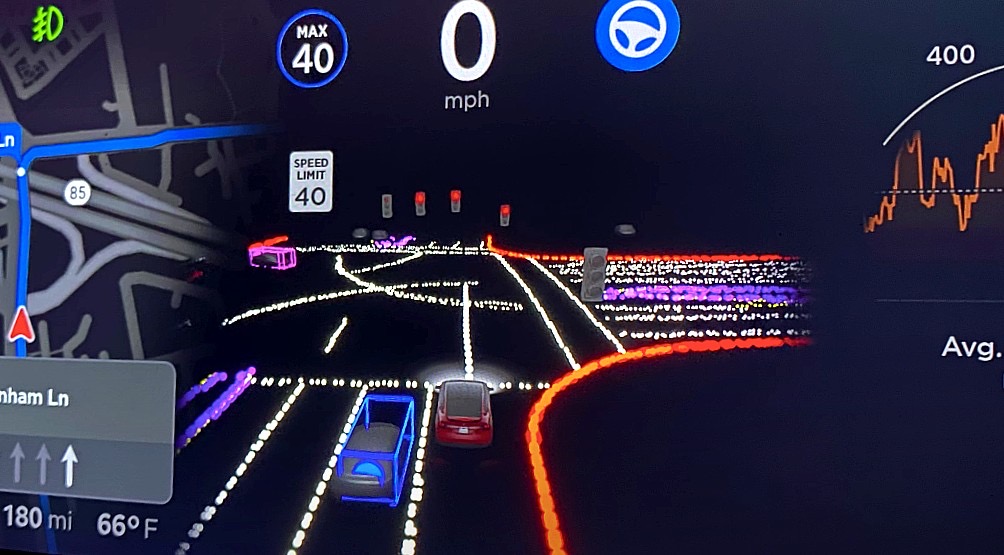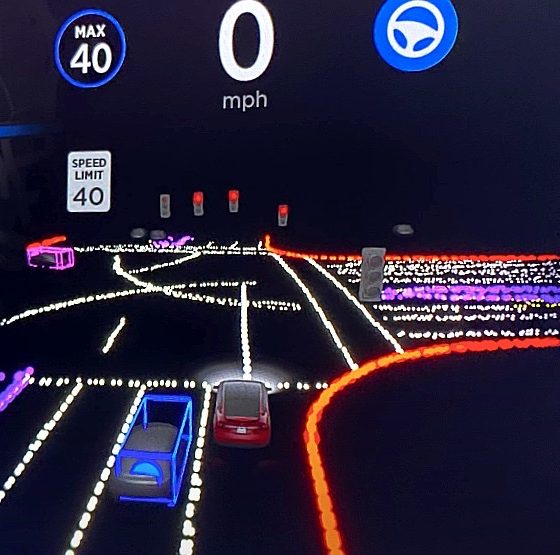

News
Elon Musk extends thanks to FSD beta testers for giving valuable real-world data
Elon Musk has extended his thanks to Tesla owners who received the company’s limited Full Self-Driving beta last week. The information Tesla is gathering from early access FSD beta testers will be invaluable as the company’s AI team continues to enhance and refine the EV automaker’s autonomous driving software.
The founder of Tesla Owners Club Vancouver Islands James Locke asked Elon Musk about his view on the content early access FSD testers were sharing. “Yes, very helpful,” said the Tesla CEO. “Thanks to all beta testers.”
Last week, Musk announced that Tesla plans to roll out the FSD beta to the general public later this year. Tesla will need all the information it can get to make sure that the full release of the Full Self-Driving beta goes smoothly.
Videos and other content early beta testers have shared recently revealed how much more intuitive and human-like FSD responds to its environment while on the road. By far the most impressive detail to Tesla’s FSD beta would be how fast it improves.
Tesla enthusiast and “part-time comedy act” @WholeMarsBlog talked about FSD beta’s quick growth on Twitter. The Tesla owner’s first impression of FSD beta was that it operated like “a drunk baby driving a car.” “It’s a little questionable, but then you realize ‘holy s*** a baby is driving a car.’ Imagine what it’ll be able to do when it grows up,” tweeted @WholeMarsBlog.
Not long after, the Tesla enthusiast tweeted: “The FSD betas are improving shockingly fast. It almost seems like someone is fixing issues on the fly, and the time between builds is very short.” His recent assessment of Tesla Full Self-Driving beta suggests that the capabilities of the system are quite literally growing right in front of our eyes.
Elon Musk’s gracious thank you to early access beta testers highlights the role consumers play in Tesla’s quick software improvements. After all, the more data beta testers feed to FSD and the AI Autopilot team, the better the autonomous driving software will be in the near future.
Currently, Tesla has gathered the most real-world data for autonomous driving. Tesla’s Director of AI Andrej Karpathy revealed that the company has gathered up to 3 billion miles of real-world data from its fleet as of February 2020, noted Lex Fridman.
In comparison, Waymo has gathered 20 million real-world miles as of date. Waymo is one of Tesla’s biggest competitors in autonomous vehicles, and it’s already considered as one of the leaders in self-driving tech. Needless to say, the vast difference in the companies’ real-world data is striking.
Tesla owners can be credited for the billion miles worth of data the company has collected for FSD. Each and every Tesla on the road right now gathers bits of information that will help Karpathy and the company’s AI team polish Full Self-Driving.
Before any FSD updates are released to the entire Tesla fleet, however, it must be refined. Hence the importance of early access beta testers. The information they share via YouTube, Twitter, etc and feed to Tesla, the more refined FSD beta will be once it rolls out to the general public.
Here’s what Tesla’s limited FSD beta can do today.

News
Tesla FSD fleet is nearing 7 billion total miles, including 2.5 billion city miles
As can be seen on Tesla’s official FSD webpage, vehicles equipped with the system have now navigated over 6.99 billion miles.

Tesla’s Full Self-Driving (Supervised) fleet is closing in on almost 7 billion total miles driven, as per data posted by the company on its official FSD webpage.
These figures hint at the massive scale of data fueling Tesla’s rapid FSD improvements, which have been quite notable as of late.
FSD mileage milestones
As can be seen on Tesla’s official FSD webpage, vehicles equipped with the system have now navigated over 6.99 billion miles. Tesla owner and avid FSD tester Whole Mars Catalog also shared a screenshot indicating that from the nearly 7 billion miles traveled by the FSD fleet, more than 2.5 billion miles were driven inside cities.
City miles are particularly valuable for complex urban scenarios like unprotected turns, pedestrian interactions, and traffic lights. This is also the difference-maker for FSD, as only complex solutions, such as Waymo’s self-driving taxis, operate similarly on inner-city streets. And even then, incidents such as the San Francisco blackouts have proven challenging for sensor-rich vehicles like Waymos.
Tesla’s data edge
Tesla has a number of advantages in the autonomous vehicle sector, one of which is the size of its fleet and the number of vehicles training FSD on real-world roads. Tesla’s nearly 7 billion FSD miles then allow the company to roll out updates that make its vehicles behave like they are being driven by experienced drivers, even if they are operating on their own.
So notable are Tesla’s improvements to FSD that NVIDIA Director of Robotics Jim Fan, after experiencing FSD v14, noted that the system is the first AI that passes what he described as a “Physical Turing Test.”
“Despite knowing exactly how robot learning works, I still find it magical watching the steering wheel turn by itself. First it feels surreal, next it becomes routine. Then, like the smartphone, taking it away actively hurts. This is how humanity gets rewired and glued to god-like technologies,” Fan wrote in a post on X.
News
Tesla starts showing how FSD will change lives in Europe
Local officials tested the system on narrow country roads and were impressed by FSD’s smooth, human-like driving, with some calling the service a game-changer for everyday life in areas that are far from urban centers.

Tesla has launched Europe’s first public shuttle service using Full Self-Driving (Supervised) in the rural Eifelkreis Bitburg-Prüm region of Germany, demonstrating how the technology can restore independence and mobility for people who struggle with limited transport options.
Local officials tested the system on narrow country roads and were impressed by FSD’s smooth, human-like driving, with some calling the service a game-changer for everyday life in areas that are far from urban centers.
Officials see real impact on rural residents
Arzfeld Mayor Johannes Kuhl and District Administrator Andreas Kruppert personally tested the Tesla shuttle service. This allowed them to see just how well FSD navigated winding lanes and rural roads confidently. Kruppert said, “Autonomous driving sounds like science fiction to many, but we simply see here that it works totally well in rural regions too.” Kuhl, for his part, also noted that FSD “feels like a very experienced driver.”
The pilot complements the area’s “Citizen Bus” program, which provides on-demand rides for elderly residents who can no longer drive themselves. Tesla Europe shared a video of a demonstration of the service, highlighting how FSD gives people their freedom back, even in places where public transport is not as prevalent.
What the Ministry for Economic Affairs and Transport says
Rhineland-Palatinate’s Minister Daniela Schmitt supported the project, praising the collaboration that made this “first of its kind in Europe” possible. As per the ministry, the rural rollout for the service shows FSD’s potential beyond major cities, and it delivers tangible benefits like grocery runs, doctor visits, and social connections for isolated residents.
“Reliable and flexible mobility is especially vital in rural areas. With the launch of a shuttle service using self-driving vehicles (FSD supervised) by Tesla in the Eifelkreis Bitburg-Prüm, an innovative pilot project is now getting underway that complements local community bus services. It is the first project of its kind in Europe.
“The result is a real gain for rural mobility: greater accessibility, more flexibility and tangible benefits for everyday life. A strong signal for innovation, cooperation and future-oriented mobility beyond urban centers,” the ministry wrote in a LinkedIn post.
News
Tesla China quietly posts Robotaxi-related job listing
Tesla China is currently seeking a Low Voltage Electrical Engineer to work on circuit board design for the company’s autonomous vehicles.

Tesla has posted a new job listing in Shanghai explicitly tied to its Robotaxi program, fueling speculation that the company is preparing to launch its dedicated autonomous ride-hailing service in China.
As noted in the listing, Tesla China is currently seeking a Low Voltage Electrical Engineer to work on circuit board design for the company’s autonomous vehicles.
Robotaxi-specific role
The listing, which was shared on social media platform X by industry watcher @tslaming, suggested that Tesla China is looking to fill the role urgently. The job listing itself specifically mentions that the person hired for the role will be working on the Low Voltage Hardware team, which would design the circuit boards that would serve as the nervous system of the Robotaxi.
Key tasks for the role, as indicated in the job listing, include collaboration with PCB layout, firmware, mechanical, program management, and validation teams, among other responsibilities. The role is based in Shanghai.
China Robotaxi launch
China represents a massive potential market for robotaxis, with its dense urban centers and supportive policies in select cities. Tesla has limited permission to roll out FSD in the country, though despite this, its vehicles have been hailed as among the best in the market when it comes to autonomous features. So far, at least, it appears that China supports Tesla’s FSD and Robotaxi rollout.
This was hinted at in November, when Tesla brought the Cybercab to the 8th China International Import Expo (CIIE) in Shanghai, marking the first time that the autonomous two-seater was brought to the Asia-Pacific region. The vehicle, despite not having a release date in China, received a significant amount of interest among the event’s attendees.








